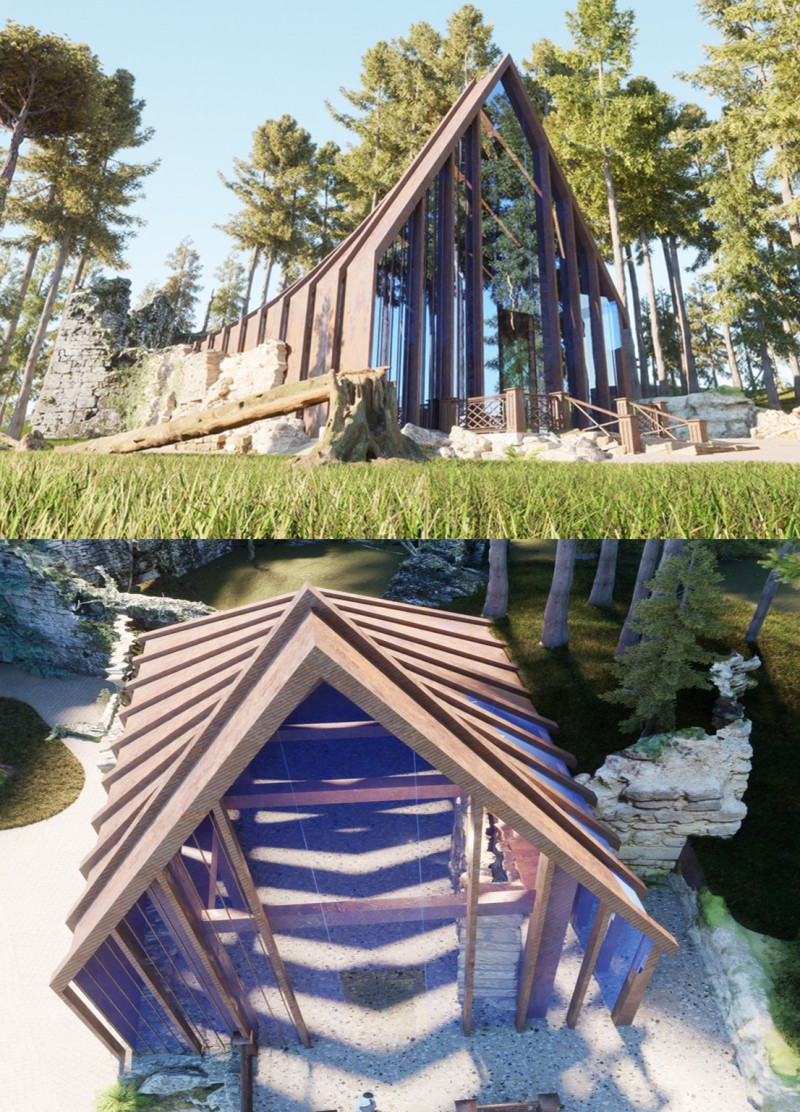5 key facts about this project
At its core, this architectural endeavor represents a blend of innovative design and careful consideration of site-specific requirements. The overall structure features a balanced combination of open and closed spaces that encourage versatility in use. Whether utilized for social gatherings, educational purposes, or quiet reflection, each area is meticulously designed to optimize functionality while providing a safe and welcoming atmosphere. The thoughtful partitioning of spaces allows for both public engagement and private contemplation, making it suitable for a wide range of activities.
A critical aspect of the design is its materiality, which plays a significant role in establishing the character of the project. The use of high-performance concrete forms the backbone of the building, providing structural integrity while allowing for expansive open interiors. This choice is complemented by a façade of transparent glass, which not only invites natural light into the building but also enhances visibility, bridging the gap between indoor and outdoor spaces. Steel elements are incorporated seamlessly, contributing to the building’s modern aesthetic while ensuring durability and resilience. Additionally, the use of sustainably sourced wood in selected areas introduces warmth to the environment, creating a sense of comfort that contrasts with the more industrial materials.
A unique feature of this architectural design is its integration of green technologies and sustainable practices. The roof is equipped with a green system, which not only helps to manage stormwater runoff but also contributes to insulation and biodiversity. The careful placement of windows maximizes passive solar gain, reducing the need for artificial heating and cooling, thereby promoting energy efficiency. This approach exemplifies a commitment to reducing the environmental footprint of the building while enhancing the overall experience of the occupants.
The design also places a strong emphasis on the surrounding landscape, taking advantage of the site’s natural features. Outdoor spaces are designed to complement the building, providing areas for relaxation, interaction, and community activities. Pathways lead to inviting gardens and recreational spaces, integrating nature into the overall user experience. By prioritizing access to greenspaces, the project promotes health and well-being, reinforcing the relationship between architecture and its natural surroundings.
Additionally, the use of color throughout the interior spaces has been carefully considered, with palettes chosen to evoke a sense of calm and focus. Natural light plays a crucial role, with strategically placed windows and skylights allowing sunlight to filter through the interior, creating dynamic lighting conditions that change throughout the day. This attention to detail extends to the selection of furnishings, which are both functional and aesthetically pleasing, enhancing the overall user experience.
A profound aspect of this project is how it invites community engagement. Open spaces encourage social interaction, making the building a hub for local events and activities. The architecture does not merely serve as a backdrop; instead, it creates a dynamic atmosphere where spontaneous gatherings and organized events can thrive. This aspect of the design reflects a broader architectural idea of community-oriented spaces that prioritize human connection.
For those interested in further exploring this architectural design, delving into the architectural plans, sections, and visualizations can provide a deeper understanding of the project's intricacies. A closer look at these elements reveals the careful thought that has been invested in every detail of the design, showcasing how each architectural idea contributes to the larger narrative of the building. Engaging with these materials will offer valuable insights into how architecture can effectively serve both individual and community needs, promoting a sense of place and belonging.


 Darejan Shatashvili
Darejan Shatashvili 




















